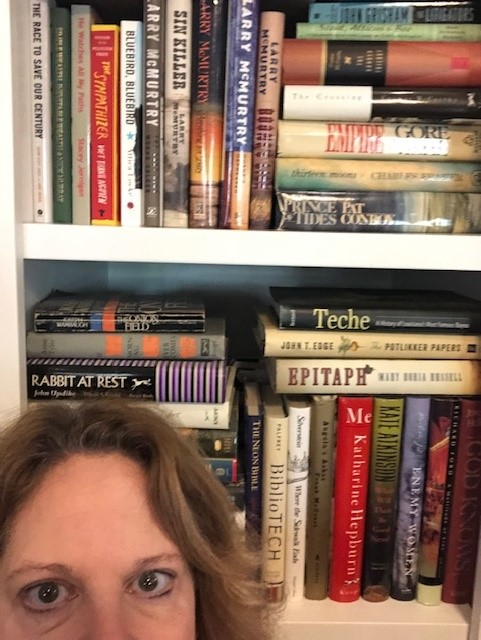Reflections on a Reading Life
- Renee Chevallier

- Nov 15, 2021
- 4 min read
Unsurprisingly for someone who ultimately became a librarian, I have always loved to read. Growing up, it was not uncommon to find me avoiding chores with my nose buried in a book or finishing homework hurriedly because the next chapter awaited. I read widely, visiting my small-town library on my bicycle and returning home with the basket full of books. High school didn’t slow me down nor did college. I always carved out time to read for pleasure no matter how much reading was assigned in my English and History classes.

My first semester at LSU, I met Mark. He was unlike any other guy I had ever known, mainly because he was a reader, too. In fact, he seemed to consume books at an even faster rate than me. For the first time in my life, I was discussing books with someone who seemed to get exactly how I felt when encountering the magic of the written word. It seemed to be a match made in heaven; turns out it was--over 35 years of marriage, and we are still exchanging favorite titles. Then, I distinctly remember being brought up short when he observed the way he slipped into the persona of the protagonist of whatever book he was reading. He easily became Huck Finn (his personal favorite) or Yossarian (Catch 22) or Gus McRae (Lonesome Dove). I realized that I was casting myself as a bystander in the books we loved in common.

Upon closer examination, it became clear to me that all the books the two of us viewed as classics and loved had male protagonists. I couldn’t see myself leading the action in those books. This was my initial encounter with the idea of “windows and mirrors” in my reading life. In 1990, educator Dr. Rudine Sims Bishop wrote about the importance of windows and mirrors in children’s literature. The windows allow us to see other people and their experiences through books, and the mirrors allow us to see ourselves. Now, it wasn’t as if I had never seen the mirrors in my chosen reading material before. I regularly read and re-read Little Women by Louisa May Alcott expressly because I could see myself as all four March sisters: nurturing eldest Meg; awkward yet talented Jo; tragically fragile Beth; and bratty but artistic Amy. Rather, I began to see the importance of engaging with many different types of protagonists—male and female; varied ages, nationalities, ethnicities, etc. My empathy increases as I experience the world vicariously by adopting the different perspectives of my protagonist. How could I read Beloved by Toni Morrison, for example, and not ask myself what I would do if faced with the decision to allow my children to return to a life of servitude? How would I react if my only mission was to marry well while being underestimated by everyone around me as Elizabeth Bennett is in Pride and Prejudice?

As a librarian, I believe the building of a collection is both an art and a science. It is so important that my students see themselves in the books that they encounter in the Beatrice M. Haggerty Library. The lack of characters that reflect students’ cultures and experiences can lead them to feel that those same experiences are devalued. While building a reflective collection has become easier as movements like We Need Diverse Books, a non-profit organization whose members advocate for changes to the publishing industry, gain traction, the work is far from over. Writers from underrepresented communities may have difficulty finding an outlet willing to publish their books, and, when they do find a publisher, the full weight of promotion may not be there.

I encourage my students to demand books by and about people who look like them, and I will always entertain student requests when ordering new books for the library. At the same time, I ask the students to explore the lives of others through reading by checking out a book that may take them out of their comfort zone. By seeing the world through a different perspective, I think all readers gain empathy and a sense of well-being in shared experiences. Readers should always be looking for mirrors as well as windows and be willing to slip on new personas as they engage with stories.
Renee Chevallier has been a librarian for over 30 years and has been the head Librarian at Ursuline since 1999. The best thing about being a school librarian is getting a chance to do all the things--collection development, instruction, readers' advisory, collaboration with faculty, reference and research work with individual students, etc. There is never a dull moment in the Beatrice M. Haggerty Library which serves nearly one thousand patrons--students, faculty and staff. Renee works to prepare the UA students for research in college and beyond through information literacy instruction. She appreciates the power of the written word and loves to talk books with anyone willing to engage! Renee holds a Bachelor of Arts in English from LSU, a Masters of Library and Information Science from UNT, and has earned a certificate in Archives and Records Management from University of Long Island. In her free time, she reads, cooks and does her best to entertain her Aussie Shepherd, Roux.



Comments